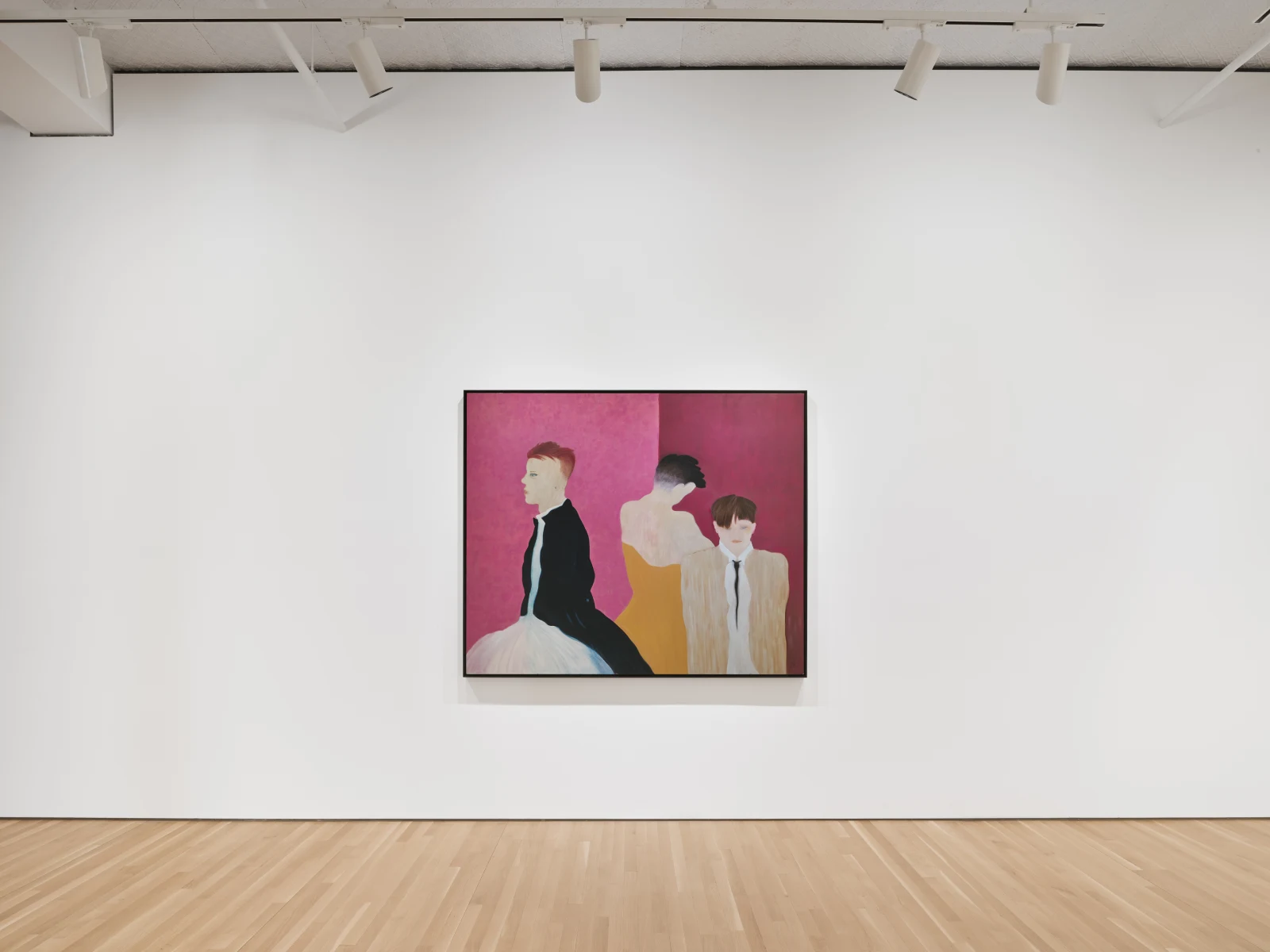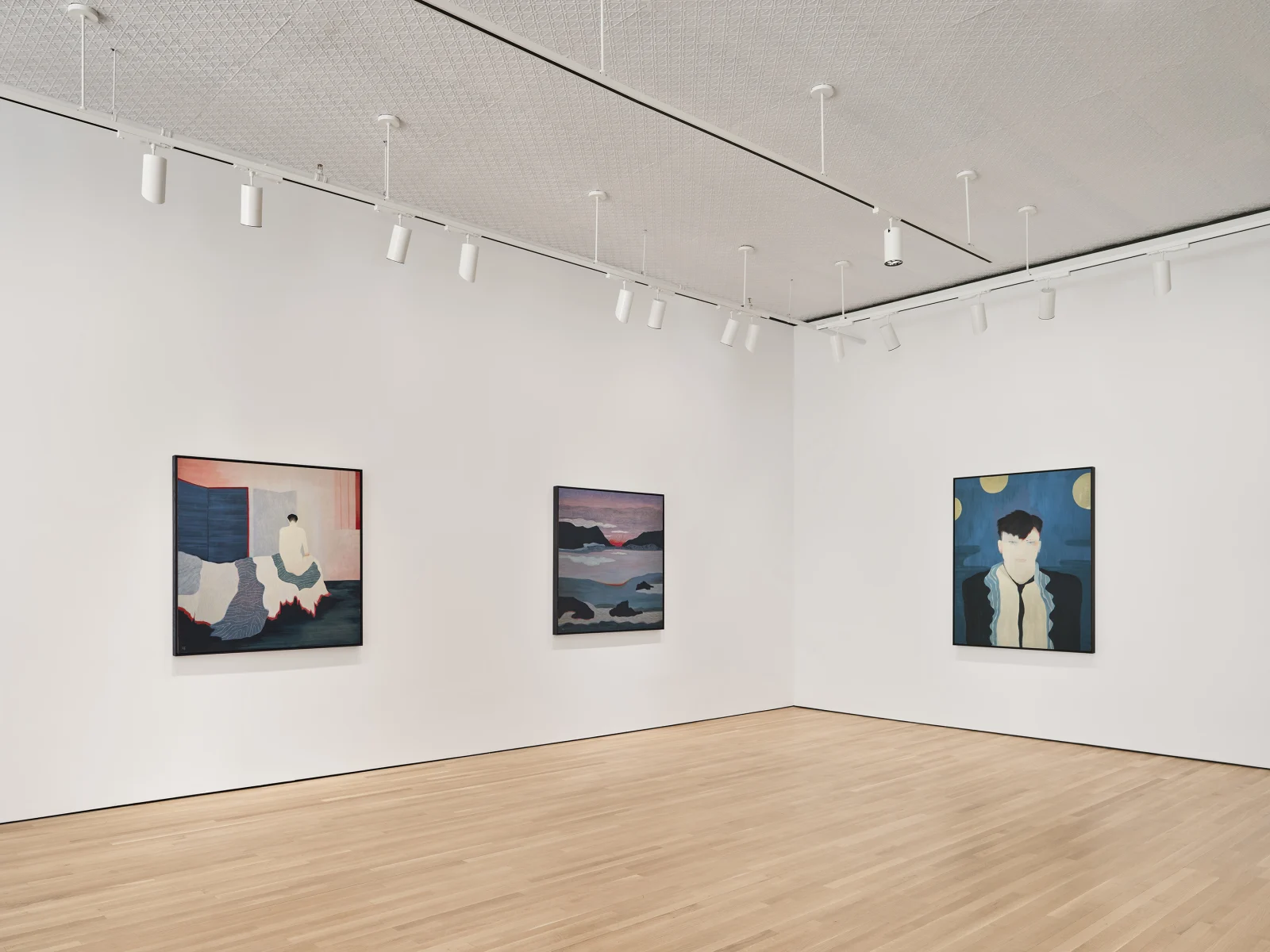
Anne Rothenstein
Overview
Stephen Friedman Gallery presents a solo exhibition by Anne Rothenstein, marking the artist’s New York debut. The presentation features Rothenstein’s largest works to date and focuses on her enigmatic approach to portraiture, interior spaces, and landscapes.
Rothenstein’s dreamlike paintings depict expansive landscapes and intimate interiors drawn from memory, personal experiences, and found material from newspapers and magazines. Whether depicting androgynous figures or melancholic landscapes, Rothenstein's works blur the lines of identity and narrative, inviting observers to immerse themselves in the ambiguity of her creations. Curator and writer Simon Grant aptly describes the experience of viewing Rothenstein's paintings, "Looking at these paintings can feel as if we have joined a drama that has been unfolding but of which we may have missed the crucial part."
Rothenstein's figures are deliberately ambiguous, conjuring introspection and contemplation. While the subdued and pensive demeanor of her characters might convey solitude, they exude a presence that transcends this. In Three Figures (2023), the artist provides a glimpse into the inherent isolation experienced by human beings within a social context. Positioned on the far left, a figure is wearing a reconfigured tuxedo dress, which obscures defined gender and identity. This attire, also observed in Seated Figure and Thinking about Billy Porter (both 2024), serves as a nod to fashion as a form of political expression, drawing inspiration from actor Billy Porter’s ensemble at the 2019 Oscars ceremony. At once, these figures point to new horizons in gender politics while echoing the longstanding tradition of late nineteenth and early twentieth-century portraiture, reminiscent of artists such as Edouard Vuillard and Edvard Munch.
Stephen Friedman Gallery presents a solo exhibition by Anne Rothenstein, marking the artist’s New York debut. The presentation features Rothenstein’s largest works to date and focuses on her enigmatic approach to portraiture, interior spaces, and landscapes.
Rothenstein’s dreamlike paintings depict expansive landscapes and intimate interiors drawn from memory, personal experiences, and found material from newspapers and magazines. Whether depicting androgynous figures or melancholic landscapes, Rothenstein's works blur the lines of identity and narrative, inviting observers to immerse themselves in the ambiguity of her creations. Curator and writer Simon Grant aptly describes the experience of viewing Rothenstein's paintings, "Looking at these paintings can feel as if we have joined a drama that has been unfolding but of which we may have missed the crucial part."
Rothenstein's figures are deliberately ambiguous, conjuring introspection and contemplation. While the subdued and pensive demeanor of her characters might convey solitude, they exude a presence that transcends this. In Three Figures (2023), the artist provides a glimpse into the inherent isolation experienced by human beings within a social context. Positioned on the far left, a figure is wearing a reconfigured tuxedo dress, which obscures defined gender and identity. This attire, also observed in Seated Figure and Thinking about Billy Porter (both 2024), serves as a nod to fashion as a form of political expression, drawing inspiration from actor Billy Porter’s ensemble at the 2019 Oscars ceremony. At once, these figures point to new horizons in gender politics while echoing the longstanding tradition of late nineteenth and early twentieth-century portraiture, reminiscent of artists such as Edouard Vuillard and Edvard Munch.
The power behind these works is further evident in the artist’s application of paint, and her distinctive use of color. Throughout the exhibition, burgundy red tones, pale greens, and nostalgic blues emerge and recede to reveal depth and movement. The color palette pays homage to colorists who inspire Rothenstein: Howard Hodgkin, Vilhelm Hammershøi, and Gwen John. In works like Shadow and Heat (both from 2023), the artist rendered two iterations of the same composition. The subtle variations between them evoke the notion of distorted memories resurfacing in our minds. Here, a lone figure and a dog traverse a burning landscape, reflecting concerns about climate change and devastating wildfires. This further evidences how global events influence Rothenstein’s practice: “However much I try to keep the outside world at a distance it always insists on creeping in and often steers the direction the work is taking”.
In her exploration of scale and texture for her New York debut, Rothenstein oscillates between canvas and panel for the first time, introducing a contrast to her signature wood panels. This shift enables the artist to delve deeper into her creative process and further enhance the immersive quality of her work. Through a combination of bold brushstrokes and nuanced color variations, Rothenstein achieves a striking visual harmony, where figures emerge from the surrounding space with a haunting presence. Speaking of Rothenstein’s work, art critic and curator Katy Hessel writes, "When I look at your works, their solitariness comforts me. It’s rare that you see solitude as a happy thing."
Stephen Friedman Gallery presents a solo exhibition by Anne Rothenstein, marking the artist’s New York debut. The presentation features Rothenstein’s largest works to date and focuses on her enigmatic approach to portraiture, interior spaces, and landscapes.
Watch
Installation Views



















